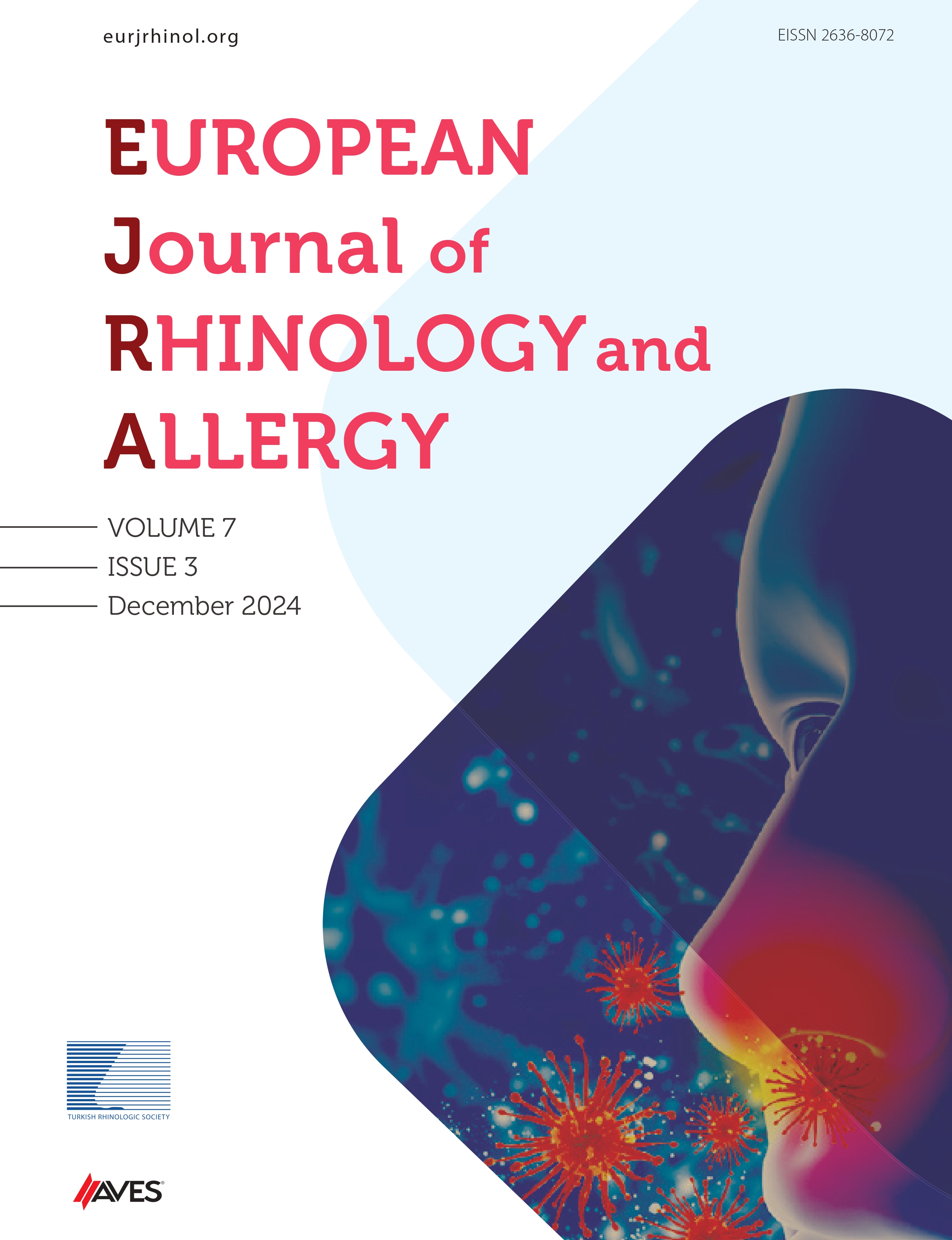Objective: The concept of compensatory turbinate hypertrophy (CTH) has found a frequent mention in research works. However, despite its clinical significance, there is a paucity in the research of regulatory mechanisms of CTH process at the cellular levels. The objective of this study is to assess the importance of apoptosis in the CTH process and understand nasal physiology.
Material and Methods: In total, 23 adults who underwent septoplasty and partial turbinectomy for the management of unilateral nasal septal deviations (NSD) and CTH were included in this study. Turbinectomy specimens were immunohistochemically evaluated using terminal deoxynucleotidyl transferase-mediated dUTP nick-end labeling (TUNEL) stain and anti-human-activated pro-Caspase 3 monoclonal antibody stains. Percentages of apoptotic cells (apoptotic index [AI]) were determined at various cell types. The statistical analysis was based on the AI differences between the hypertrophic and non-hypertrophic turbinates of the same patient. A subgroup analysis was also performed to evaluate the effect of smoking on AIs.
Results: No cell type had statistically significant AI differences between the hypertrophic and non-hypertrophic turbinates. Vascular smooth muscle cells of the CTH side had slightly lower AIs although this trend was statistically not significant (Caspase 3, p = 0.066). No difference in AIs was detected at the other cell types. Similarly, no AI difference related to smoking could be observed.
Conclusions: Our results have not shown any significant differences among AIs of many cell types between opposite turbinates or between smokers and nonsmokers. Therefore, apoptosis has not found to be active as a mechanism of regulation for the CTH of adults with stable NSDs.
Cite this article as: Ergün O, Yılmaz T, Süzer A, Müftüoğlu S. The Role of Apoptosis at the Compensatory Turbinate Hypertrophy Secondary to Nasal Septum Deviation: A Case Control Study. Eur J Rhinol Allergy 2021; 4(1): 1-6.

.png)

.png)